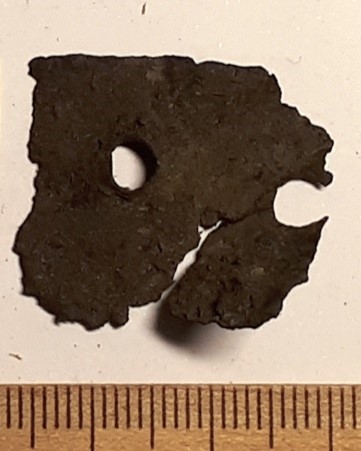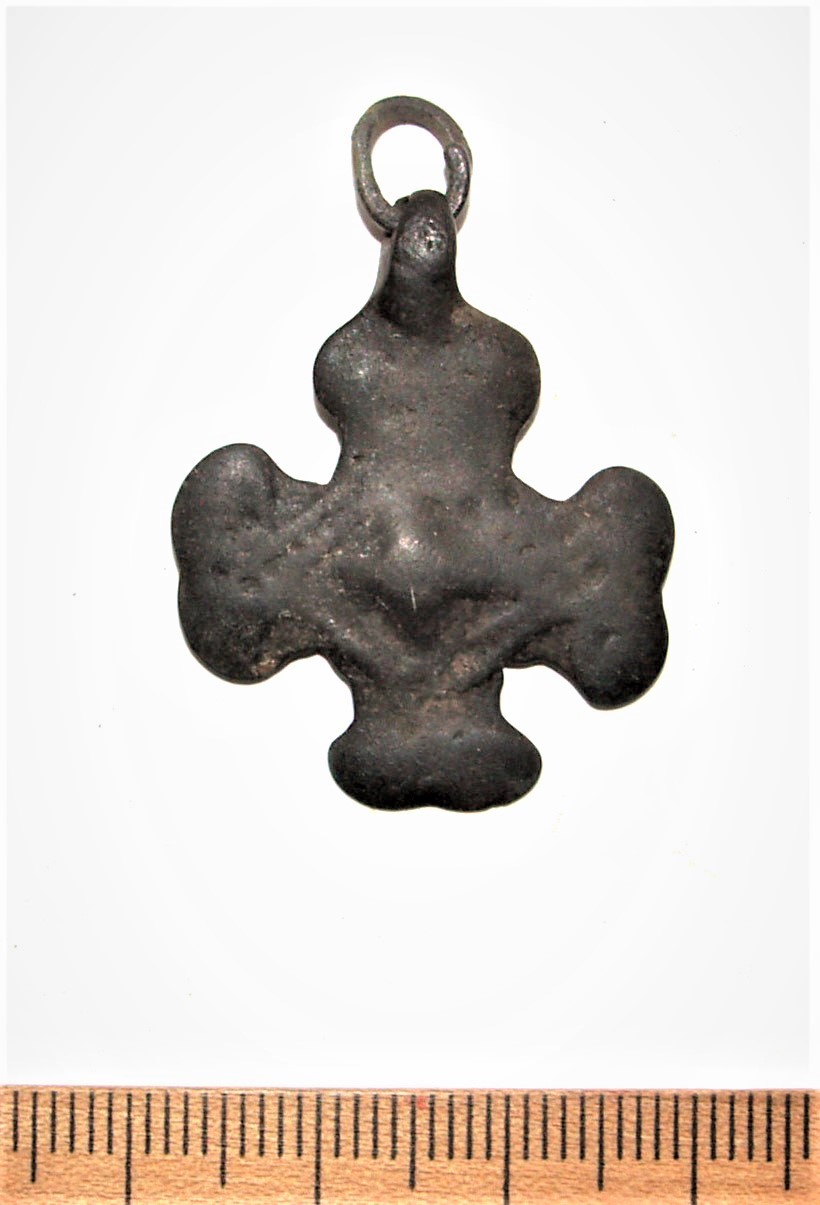Database
Our database is free to use for all history and archaeology enthusiasts. If you use our database, please do not forget to cite correctly:
Mägi, Marika; Palm, Piia Sandra. Archaeological Artefacts of Saaremaa. Foundation Osiliana / Tallinn University. Accessed: date.
The Osiliana Archaeological Database presents artefacts from Saaremaa and the surrounding small islands.
The database contains mainly Iron Age and Medieval finds that can be classified.
Undated metal or other pieces were generally excluded from the database.
Ceramics are represented by isolated examples.
The database is a work in progress and is constantly being updated.
Valjala hillfort
Finger-ring with a widening central part, silver.



Finger-ring with a widening central part, silver. Similar rings have been found in the Eura Luistari and Saramäki burials in Finland where they are dated to the 11th century (Lehtsalo-Hilander 1982, 124–126) and from Abelnieki burials in Latvia, where they are dated from the second half of the 11th century to the beginning of the 13th century (Vasks 2008, 157–158). These rings also occur in Gotland, where they are dated to the 11th-12th century in Gotland (Thunmark-Nylen 1998, Pl. 143). In Saaremaa, a similar finger-ring is recorded in Valjala churchyard where it, according to the context, belongs to the 13th or perhaps late 12th century.
Literature:
Lehtsalo-Hilander, P.-L. 1982. Luistari II: The Artefacts. SMYA 82: 2. Helsinki.
Mägi, M. 2002. At the Crossroads of Space and Time. Graves, Changing Society and Ideology on Saaremaa (Ösel), 9th–13th centuries AD. CCC papers: 6. Gotland University College, Centre for Baltic Studies; Institute of History, Department of Archaeology. Tallinn, 2002. Read the book: here. Look at the drawings of the archaeological excavations: here.
Thunmark-Nylen, L. 1998. Die Wikingerzeit Gotlands. II. Typentafeln. Almqvist & Wiksell, Stockholm.
Thunmark-Nylen, L. 2006. Die Wikingerzeit Gotlands. I. Abbildungen der Grabfunde. Almqvist & Wiksell, Stockholm.
Vasks, A. 2008. Kurši padurē? – Pētījumi Kuršu Senatnē. Rakstu Krājums. Latvijas Nacionālā Vēstures Muzeja Raksti, 14, 153–166.
Valjala hillfort
Fragment of a finger-ring with thickening grooved central part, bronze. Very widespread artefact type in late 12th-13th century Saaremaa.

Fragment of a finger-ring with thickening grooved central part, bronze. Very widespread artefact type in late 12th-13th century Saaremaa.
Literature:
Mägi, M. 2002. At the Crossroads of Space and Time. Graves, Changing Society and Ideology on Saaremaa (Ösel), 9th–13th centuries AD. CCC papers: 6. Gotland University College, Centre for Baltic Studies; Institute of History, Department of Archaeology. Tallinn, 2002. Read the book: here. Look at the drawings of the archaeological excavations: here.
Mägi, M.; Malve, M. & Toome, T. 2019. Early Christian burials at Valjala churchyard, Saaremaa.– Archaeological Fieldwork in Estonia, 2018, 93−118, 109. Read the article: here.
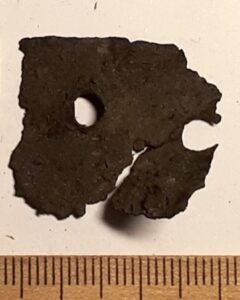
Semi-manufactured row, iron. Such finds in Sigtuna have been associated with ship-building (Edberg 2013).
Literature:
Edberg, R. 2013. Subterranean Maritime Archaeology in Sigtuna, Sweden: Excavated evidence of Viking Age boat building and repair. – International Journal of Nautical Archaeology 42(1), 196-204.
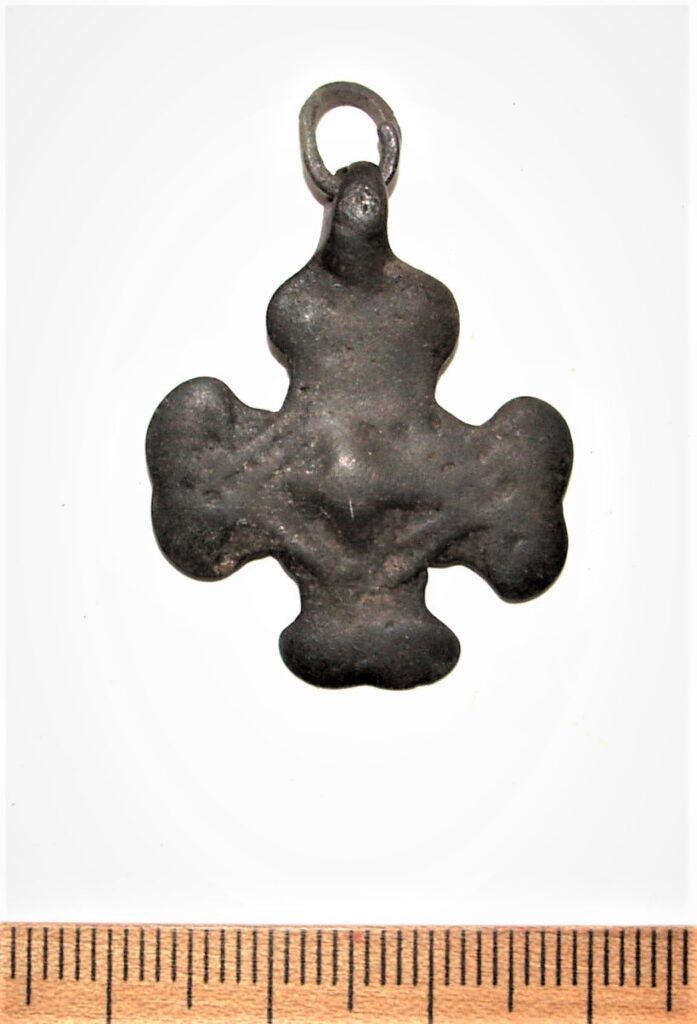
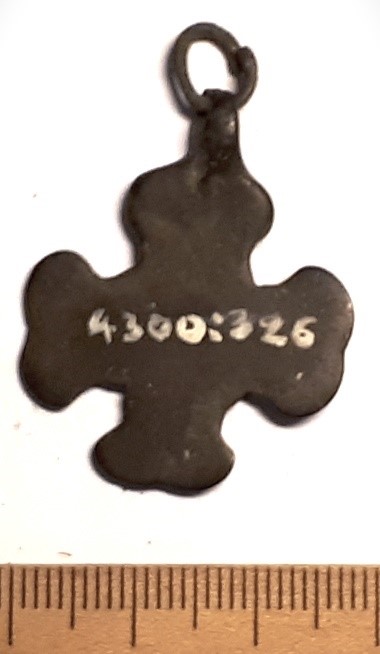
Cross-shaped pendant. According to Tuuli Kurisoo’s classification subtype B1.5.1 that have, among othrs, been found from Pada inhumation cemetery of mainly the 13th century (e. g. grave XXV). Unusual subtype that has presently only been found in Estonia (Kurisoo 2021, 62-63).
Literature:
Kurisoo, T. 2021. Adornment, self-definition, religion: Pendants of the north-eastern Baltic Sea region, 9th-13th century. Studien zur Siedlungsgeschichte und Archäologie der Ostseegebiete, Band 19. Hamburg: Wachholz.
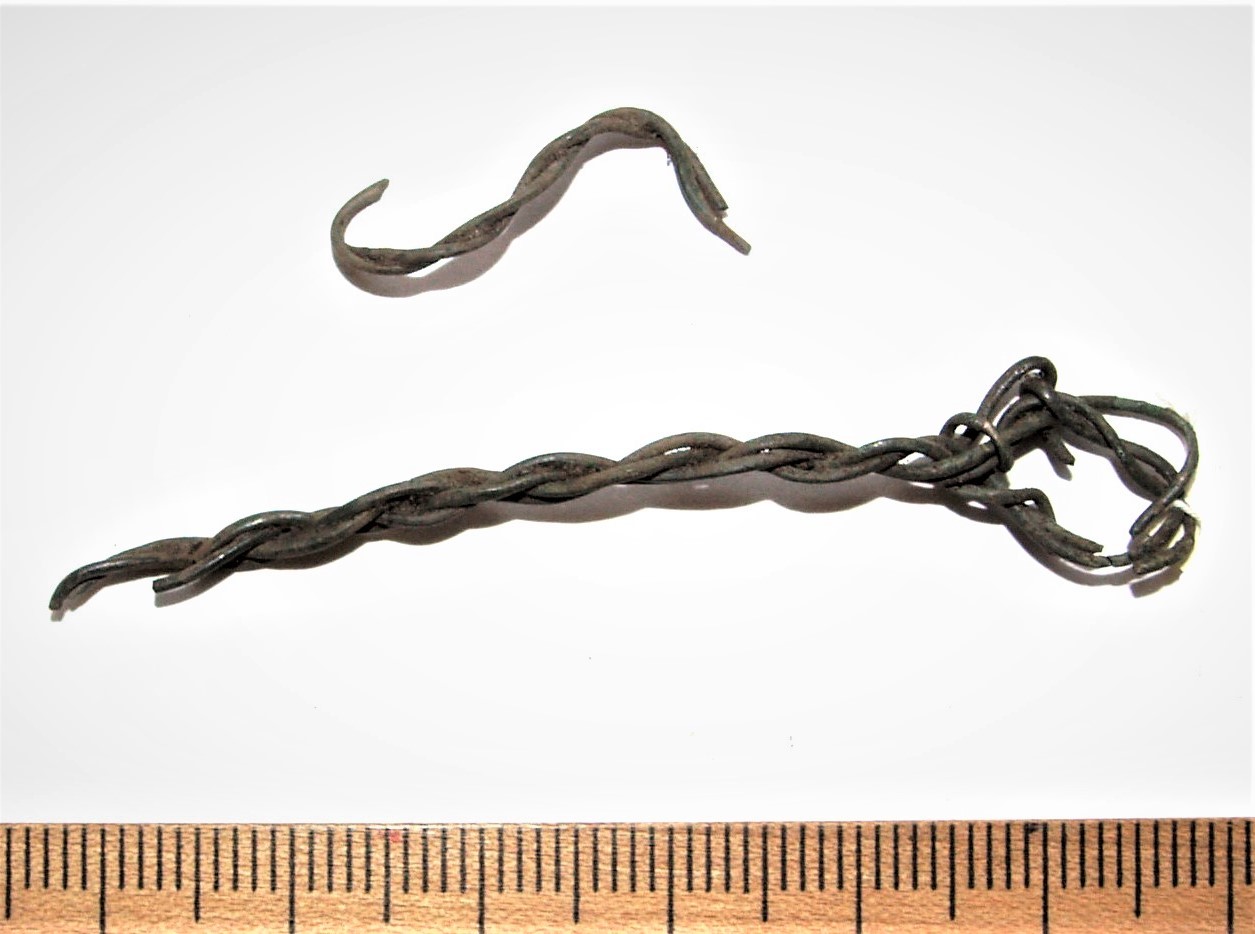
Valjala hillfort
Chain bar.
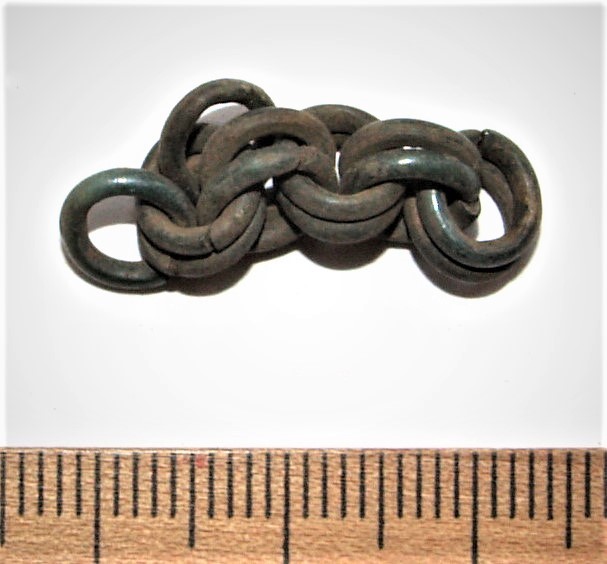
Valjala hillfort
Chain fragment.
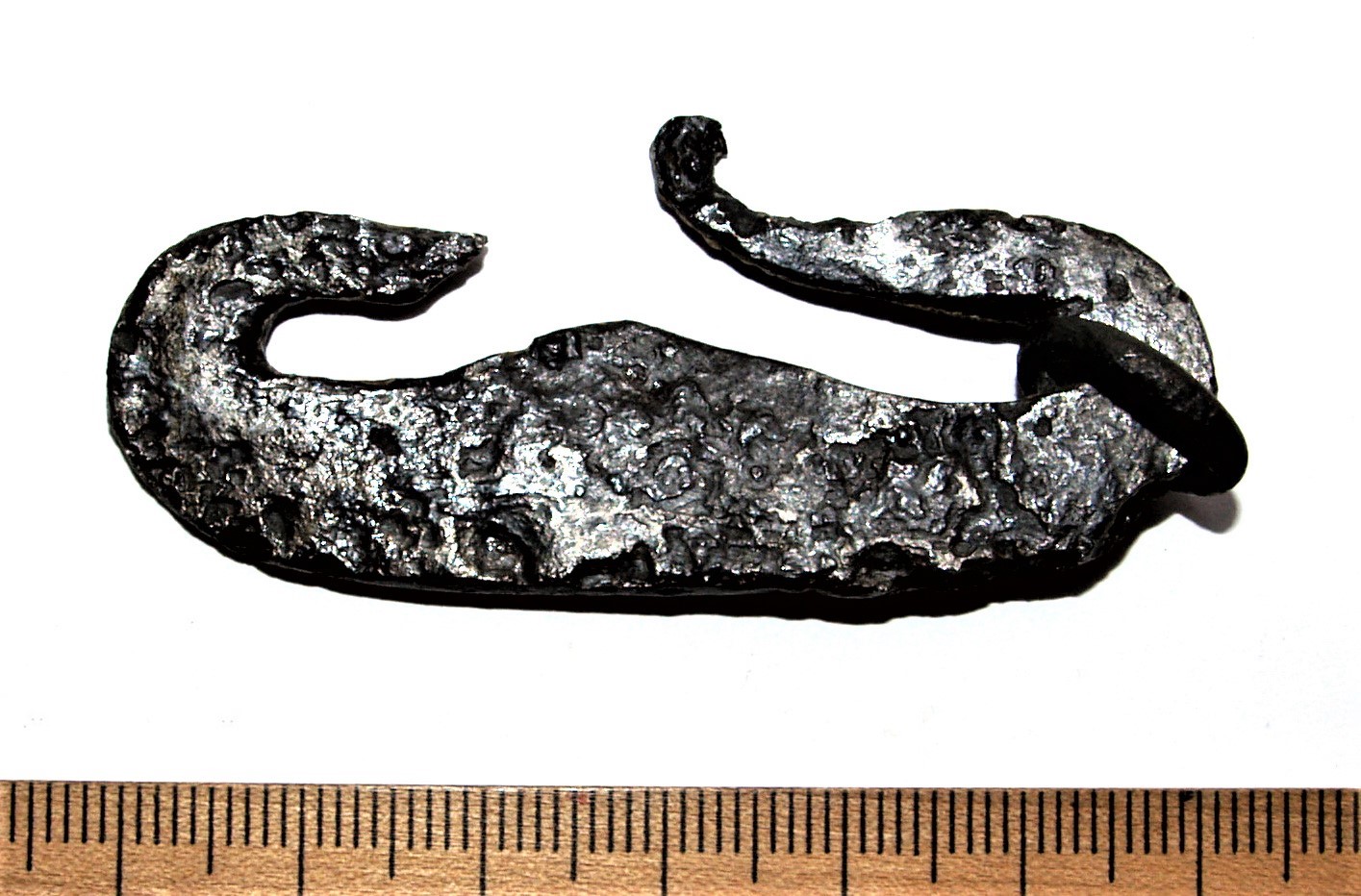
Valjala hillfort
Fire striking iron. Similar stike-a-ligts were used over a long period. Dated here due to the context.
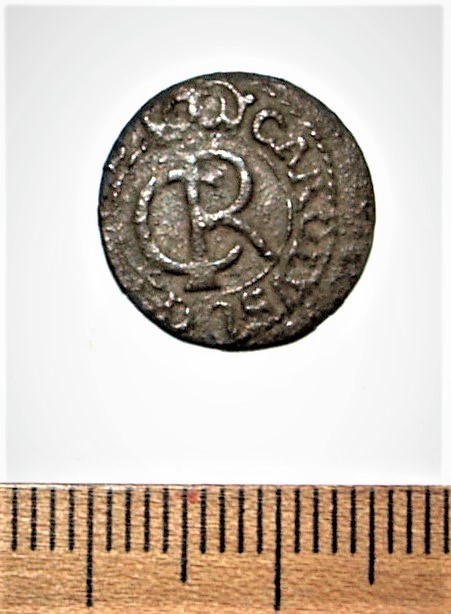
Valjala hillfort
Karl XI (1660-1697) coin.
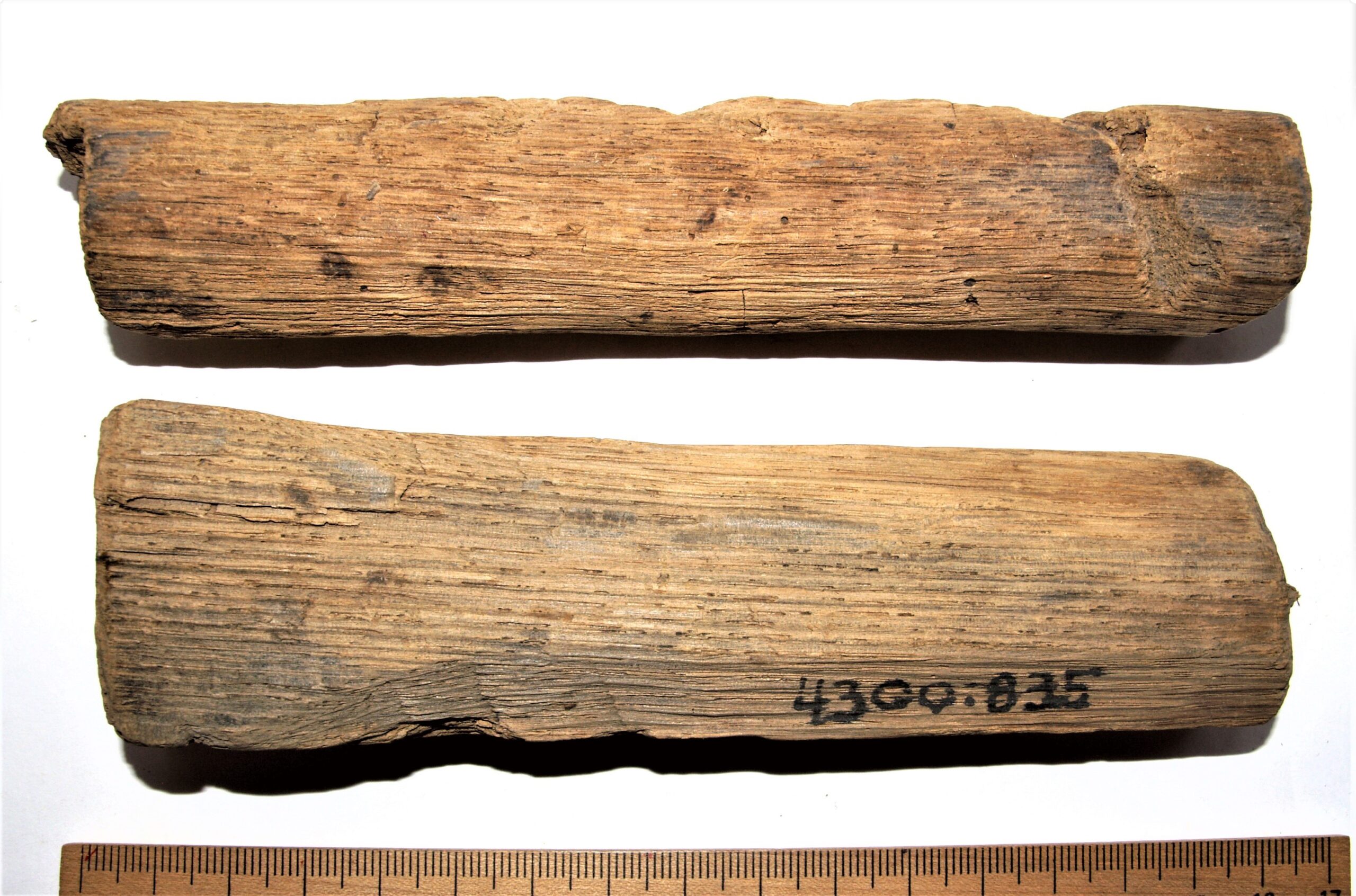
Valjala hillfort
Fragments of a wooden artefact, 2.
The negative value refers to time Before Christ.


